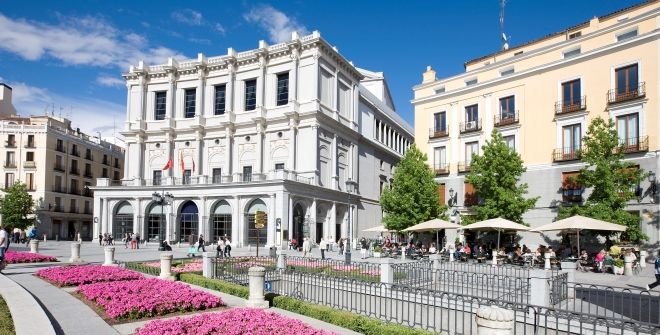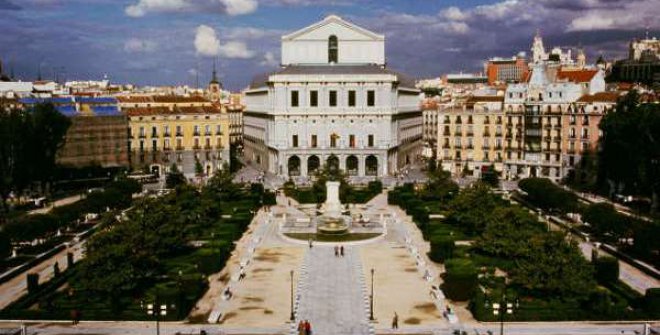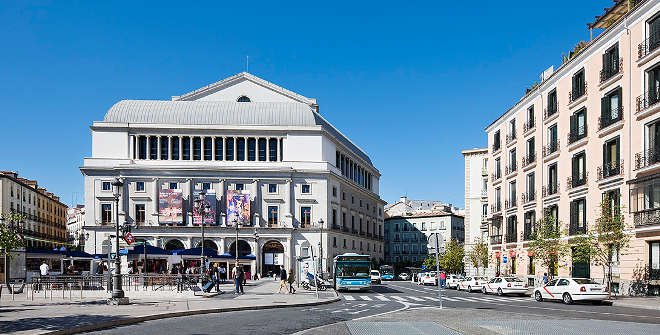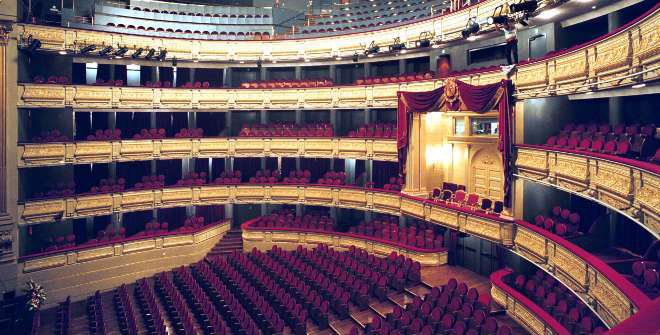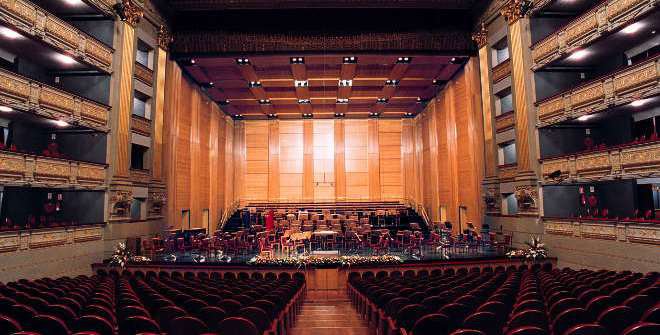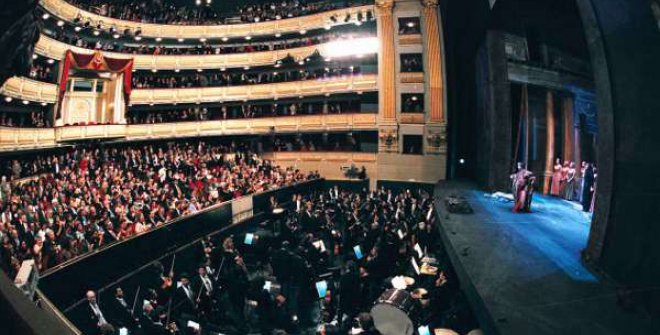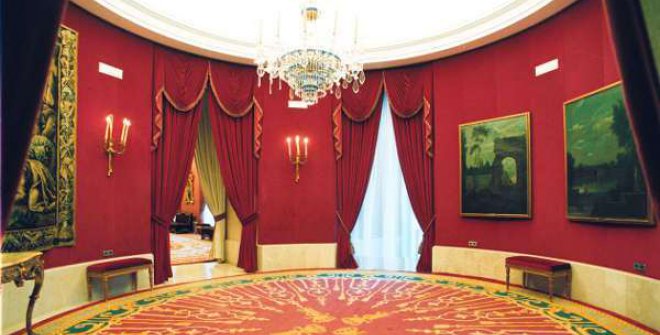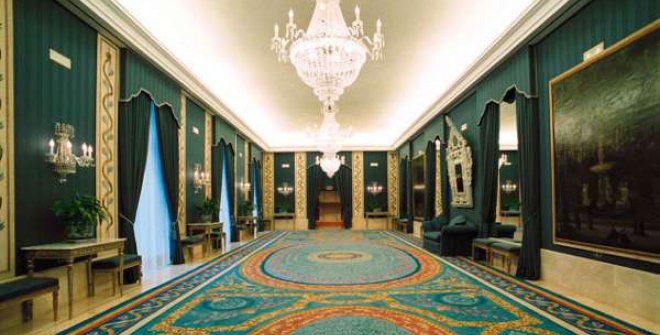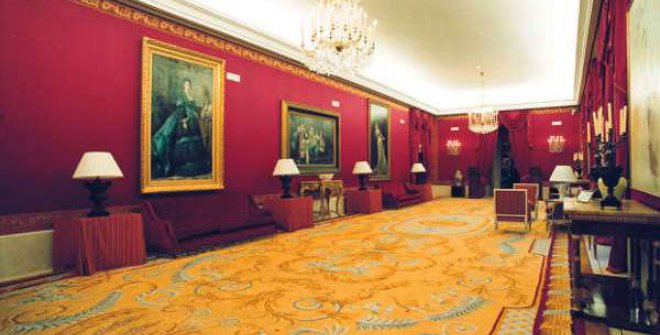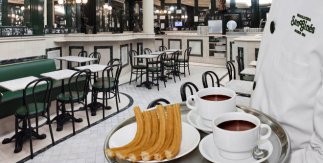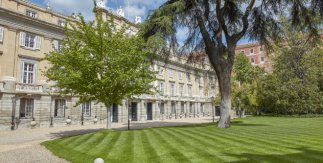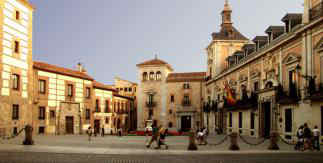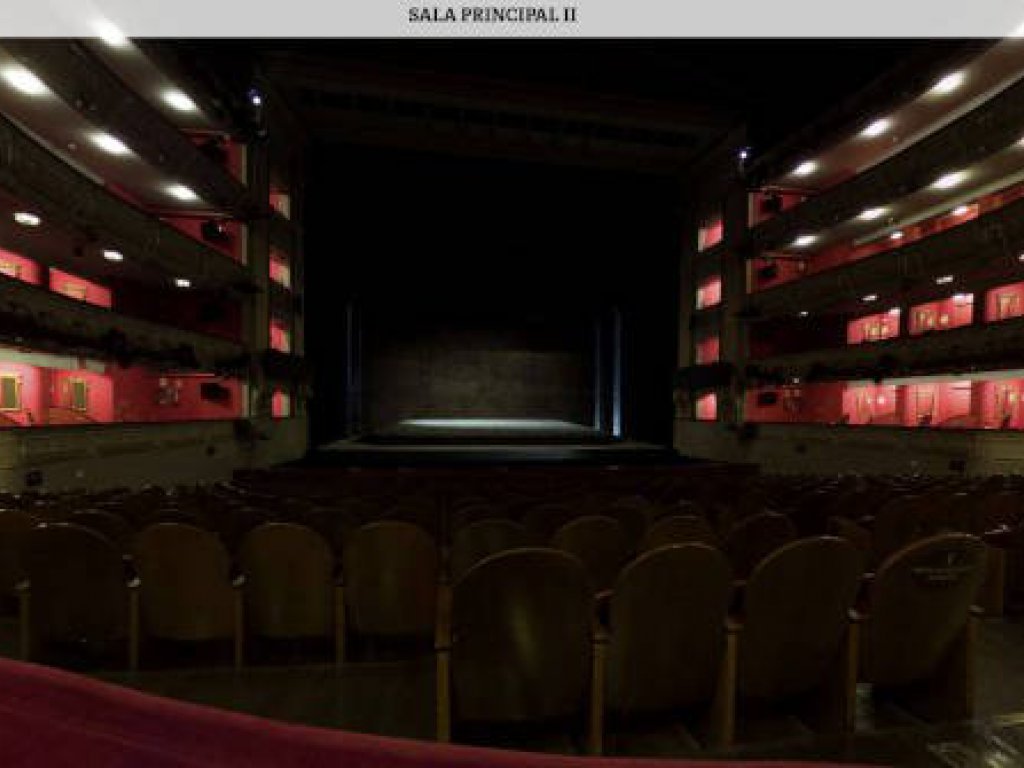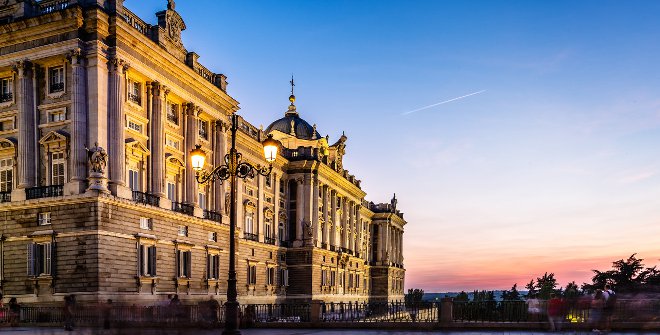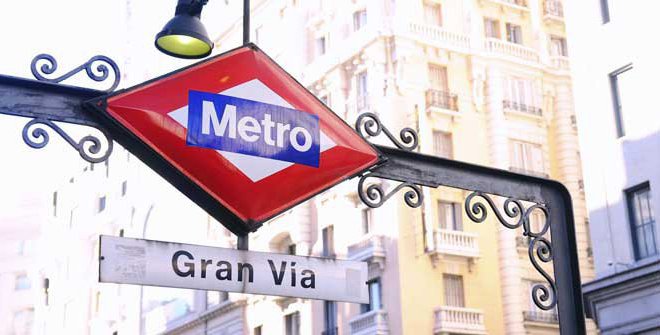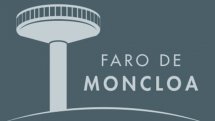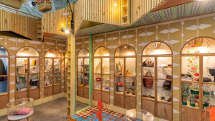Madrid’s opera house, designed by the architect Antonio López Aguado during the reign of Queen Isabella I, was inaugurated in 1850 (although the first stone was laid on 23 April 1818). Located a stone's throw from Puerta del Sol, the building was one of Europe’s leading theatres for over 75 years, until it was deemed unsafe in 1925 and closed for 41 years. In 1966 it was reopened as a concert hall with the Spanish National Orchestra as its resident orchestra. In 1977 it was declared a National Monument and in 1997, after 7 years of extensive works, the Teatro Real once again became home to Madrid’s opera scene.
The building displays a combination of architectural styles. The theatre’s crown jewel, however, is its 1,472 m² stage area. This is the heart of the opera house and allows for very complex set changes thanks to its 18 articulated platforms which permit multiple combinations both on the stage and in the orchestra pit. With a maximum capacity of 1,958 seats in its main hall, depending on staging requirements, the theatre features 28 boxes on its different floors, in addition to eight proscenium boxes and a double-height Royal Box.
The theatre has several halls that can be hired for all kinds of public or private events. These include the Manuel de Falla Hall, where orchestras can rehearse with excellent acoustics thanks to its design; the Falla Hall, located just above the entrance, on the second floor with a unique terrace from which the Royal Palace and the gardens of the Plaza de Oriente can be contemplated; the Felipe V, Arrieta, Vergara and Carlos III Halls and the adjoining Dance Hall, decorated in different shades with elements from National Heritage and the Prado Museum. The lamps were made in the Real Fábrica de la Granja; and the Gayarre Hall, a multi-purpose hall with modern equipment that makes it the ideal place to hold a lyrical recital and business events that require audiovisual projections.
On 10 May 2021, the Teatro Real received the top honour at the prestigious International Opera Awards 2021, opera’s answer to the Oscars. Named Opera Company of the Year, Madrid’s opera house has been recognised both for its outstanding work in the 2019 season and for its trailblazing efforts to operate and return opera to the stage despite the Covid-19 pandemic.
The theatre offers the following guided tours:
-
Audio guide, in English or Spanish, that allows you view the theatre at your own pace;
-
Guided tour, in English, Spanish or French, that takes you on a journey through the history of the theatre. The experienced guide will show you around the building, which dates back to 1850, sharing interesting facts about the architecture and décor, and giving you an insight into the workings of a major venue like this one.
-
Backstage technical tour that delves into the world of stage machinery, from the complex fly system, moving platforms and set constructions and strikes to the installation of the theatre’s acoustic shell.
-
Behind the curtain tour that gives an insight into all the work that goes into each production. Among other things, the guide will explain how rehearsals are conducted, how the crew work together on the actors’ costumes and characterisation, what stage directions are and what the responsibilities of the stage manager are, and show you around the dressing rooms.
-
Group Visits (adults and schoolchildren) for at least 17 people: These are mixed visits, in order to discover the secrets of the Teatro Real with a unique tour that includes elements from the three types of visits to the theatre, passing through the Lobby, the Main Hall, rehearsal rooms and many other places that form part of creating an opera.
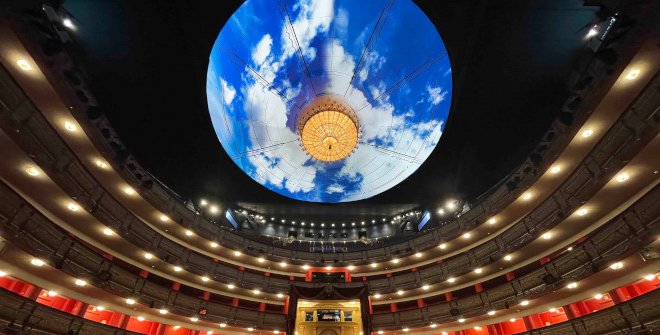
Teatro Real opens a window to the Sky
From 19 September 2023, Sala Principal in Teatro Real will host a projection called Sky by artist Jaume Plensa which will light up its dome. After the art intervention—which calls to mind the paintings that decorated domes during the classical period—is unveiled, audience members will be able to view and enjoy it from the time they enter the performance hall until the lights go off when the show starts.
Consisting of a high-resolution recording (4K) of Madrid’s sky filmed from the opera house’s rooftop in mid-June, the intervention captures the clouds’ movement in a real, continuous progression that will be projected, thanks to four sophisticated 20,000-lumen projectors, onto the dome of the main performance hall for approximately 20 minutes.
Credits:
Photos 1, 4, 5, 6, 7, 8 and 9: ©Javier del Real (Teatro Real).
 teatro_real_02.jpg
teatro_real_02.jpg teatroreal_fachada.jpg
teatroreal_fachada.jpg teatroreal_plazaopera.jpg
teatroreal_plazaopera.jpg teatroreal_palco.jpg
teatroreal_palco.jpg teatroreal_escenario.jpg
teatroreal_escenario.jpg teatroreal_operaelectra.jpg
teatroreal_operaelectra.jpg teatroreal_rotondav-real.jpg
teatroreal_rotondav-real.jpg teatroreal_saloncarlosiii.jpg
teatroreal_saloncarlosiii.jpg teatroreal_salonrojo.jpg
teatroreal_salonrojo.jpg